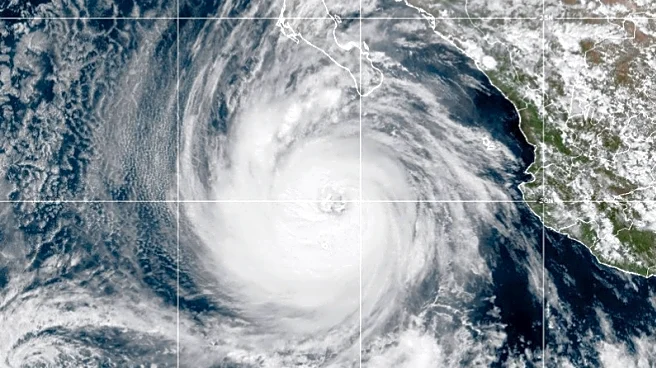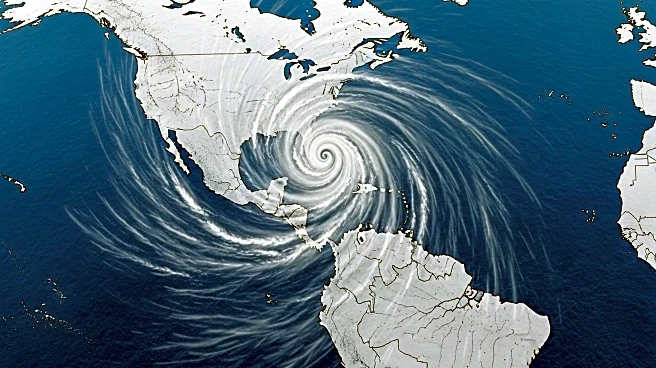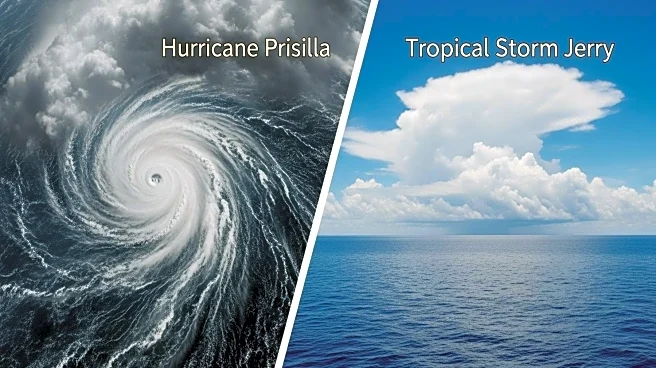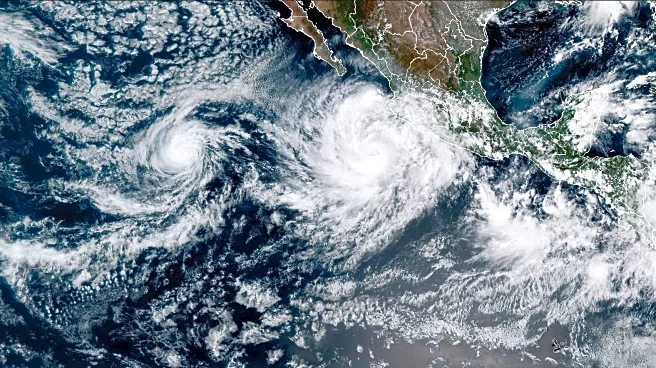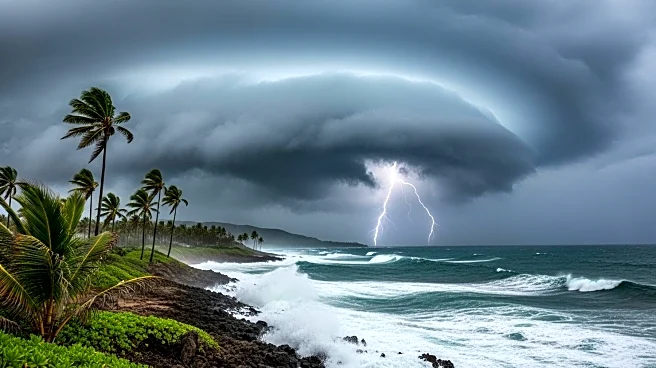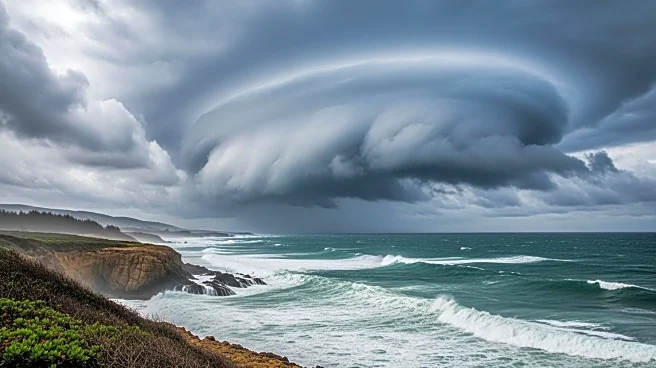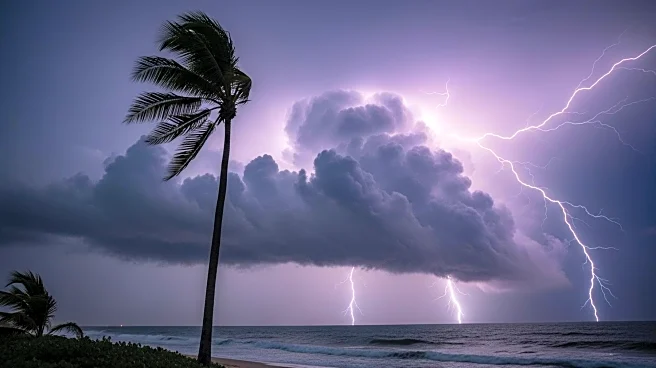What's Happening?
Hurricane Priscilla is approaching Category 3 status in the Pacific Ocean, according to the US National Hurricane Center. The hurricane is currently located about 185 miles southwest of the southern tip of Baja California, Mexico, with maximum sustained winds of 105 mph. It is moving northwest at 9 mph. The outer bands of the hurricane are affecting the Mexican state of Baja California Sur, prompting local authorities to cancel classes and set up shelters in Los Cabos for residents in vulnerable areas. Meanwhile, in the Atlantic Ocean, Tropical Storm Jerry is maintaining top winds of 50 mph and is expected to strengthen into a hurricane within the next few days. A tropical storm watch has been issued for several islands in the Caribbean, including Barbuda and Anguilla.
Why It's Important?
The approach of Hurricane Priscilla poses significant risks to the Mexican coastline, particularly in Baja California Sur, where life-threatening surf and rip currents are expected. The potential for flash flooding in southwestern Mexico could impact local communities and infrastructure, necessitating emergency preparedness measures. The strengthening of Tropical Storm Jerry in the Atlantic also raises concerns for Caribbean islands, which may face severe weather conditions and disruptions. These developments highlight the ongoing challenges posed by tropical storms and hurricanes, emphasizing the need for effective disaster response and mitigation strategies in affected regions.
What's Next?
As Hurricane Priscilla continues to move northwest, it is forecasted to weaken starting Wednesday. However, the immediate threat remains for areas along the Mexican coast, where heavy rains and flooding are anticipated. Local governments are likely to continue monitoring the situation closely and may implement further safety measures as needed. In the Atlantic, Tropical Storm Jerry's progression towards hurricane status will be closely watched, with potential impacts on the northern Leeward Islands later in the week. Authorities in these regions may issue additional warnings and advisories to ensure public safety.
Beyond the Headlines
The intensification of hurricanes and tropical storms in both the Pacific and Atlantic Oceans underscores the broader implications of climate change on weather patterns. The increased frequency and severity of such storms may lead to long-term shifts in regional climate conditions, affecting agriculture, tourism, and coastal development. Additionally, the economic costs associated with disaster response and recovery efforts could strain local and national resources, highlighting the importance of sustainable planning and investment in climate resilience.

